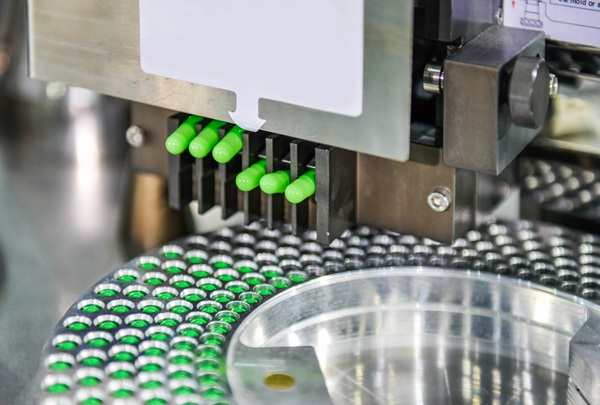.png)

T.K. Arun, ex-Economic Times editor, is a columnist known for incisive analysis of economic and policy matters.
October 8, 2025 at 6:04 AM IST
We see US President Donald Trump as an enemy of Indian exports, including of our prized pharma products. But a bigger enemy stalks Indian pharma right at home: the makers of drugs that kill, instead of healing, and generate headlines around the world that badly damage the reputation of Indian pharma, rather than that of the individual small companies culpable for the deaths.
Different Indian companies have been blamed for killing children in the Gambia in 2023 and Uzbekistan in 2022, but the common drug is cough syrup, and the common contaminants have been ethylene glycol and diethylene glycol. These are industrial solvents, and severely damage the kidneys of the small children who imbibe them in their cough syrup.
What do we do with people and companies that mix industrial solvents into medicines administered to children? What do we do with drug inspectors and regulators who let such drugs enter the supply chain? What do we do with the politicians who offer patronage to unscrupulous industrialists and civil servants who play with people’s health, the reputation of India’s pharma industry and limit the potential of the industry to generate billions more worth of revenue and millions more worth of jobs than at present?
It might be more useful to look at Indian pharma’s industrial structure. There are more than 3,000 companies and about 10,500 manufacturing units. Of these, less than 300 are compliant with the American Food and Drug Administration’s norms for quality manufacturing.
India has an elaborate drug quality control mechanism, a little too complex for efficacy. Quality control is distributed across states and the Centre. The Central Drugs Standard Control Organisation is the agency to approve new drugs and clinical trials. State-level regulators supervise manufacturing, sale and distribution. The CDSCO has labs distributed across the country, and have installed them at key ports and airports, to check samples of exports. Yet children die when they gulp down teaspoonfuls of cough syrup, in India, and abroad.
In 2023-24, the Indian pharma sector had a combined turnover of some $50 billion, according to a Press Information Bureau’s press release, of which, exports accounted for $28 billion, according to the government-sponsored Pharmaceuticals Export Promotion Council. The global pharma market is upwards of $1.5 trillion. The scope for Indian pharma to expand is enormous, especially if it deploys assiduous Indian scientists, trained in the tools of artificial intelligence, to spot likely candidates for specific diseases from the free online database of 214 million predicted protein structures generated by AlphaFold, an AI system by Google subsidiary DeepMind.
However, all technical excellence in drug discovery would come to nought, if Indian pharma’s reputation for safety and quality control is like President Trump’s reputation for consistency. There are several things that can be done to ensure quality.
Why should every Amar, Akbar and Anthony be allowed to export pharmaceuticals to the rest of the world? We do not want fly-by-night operators out to make a fast buck to tarnish the fair name of Indian pharma by exporting industrial solvents as cough syrup. Pharma export must be licensed. Let there be a minimum threshold of turnover within the domestic market for a company to qualify for a pharma export licence. It could be set at Rs 1,000 crore, and even then, a fair number of companies would qualify as exporters. A company must have a stake in protecting its own brand value before it gets a chance to add or take away from the country’s reputation for quality
In 2021, the largest 50 pharma companies accounted for 70% of the industry turnover, according to trade journal Pharmabiz. If anything, the degree of concentration would only have increased. So, if a newcomer wants to export pharma goods, it can earn the right by competing in the domestic market and securing a reasonably large slice of the pie. If this leads to consolidation in the fragmented industry, that would be all to the good.
Of the 10,500 or so manufacturing units, less than 300 are US FDA-compliant. About 2,000 units are certified to follow the World Health Organization’s Good Manufacturing Practices standards. The remaining four-fifths of the units are not. Why should any single tablet sold in the country be made anywhere but a GMP-certified facility?
The government should mandate traceability of every ingredient used in the pharma industry. GST could be a major aid in this regard. The distributed ledger and tokenisation facilities of the blockchain should be deployed to identify which raw material came from which place, in the case of every pharma unit in the country. If this is applied to the entire chemicals industry, it can be ensured that diethyl glycol would never end up in a pharma unit.
Won’t this raise the cost of medicines? It would, but that increase would obviate the cost of tragic deaths and missing therapeutic efficacy associated with spurious drugs. The reputational gain so achieved would allow Indian pharma to expand scale further, and win a larger chunk of the global market. The overall cost-benefit calculus would be in favour of rigorous quality improvement.
The biggest check on doctors prescribing particular brands of medicine, regardless of quality, simply because they receive incentives from pharma companies to prescribe their brands, is to have a healthcare system in which the bulk of the population is covered by some form of accountable care.
In traditional healthcare models, the respective incentives for healthcare providers and insurers are in conflict, and patients suffer. In accountable care, the healthcare provider makes money from the premium payment it receives from a patient population upfront. Its incentive now is to proactively keep the patient healthy, so as to minimise the outgo on treatment, and to carry out the treatment, if that becomes unavoidable, in the most cost-effective fashion.
In the traditional model, the healthcare provider wants patient to be unwell, and massively unwell at that, so as to carry out all kinds of investigations, prescribe all kinds of medication, have little children examined by consultant geriatrists, so that the bill for the healthcare provider’s curative efforts can be maximised. Accountable care would minimise medication, investigations, procedures and expert medical examinations. The risk is of not providing the patient with sufficient care. This risk can be mitigated by good regulation and competition among accountable care providers — reputational damage would kill an operation.
Universalising access to accountable care would take time. But the other measures are eminently doable in the short term. The point is to summon the will to act, instead of lapsing to the easy option of legislating tough penalty for wrongdoing – and watching little children being fed toxic drugs.




